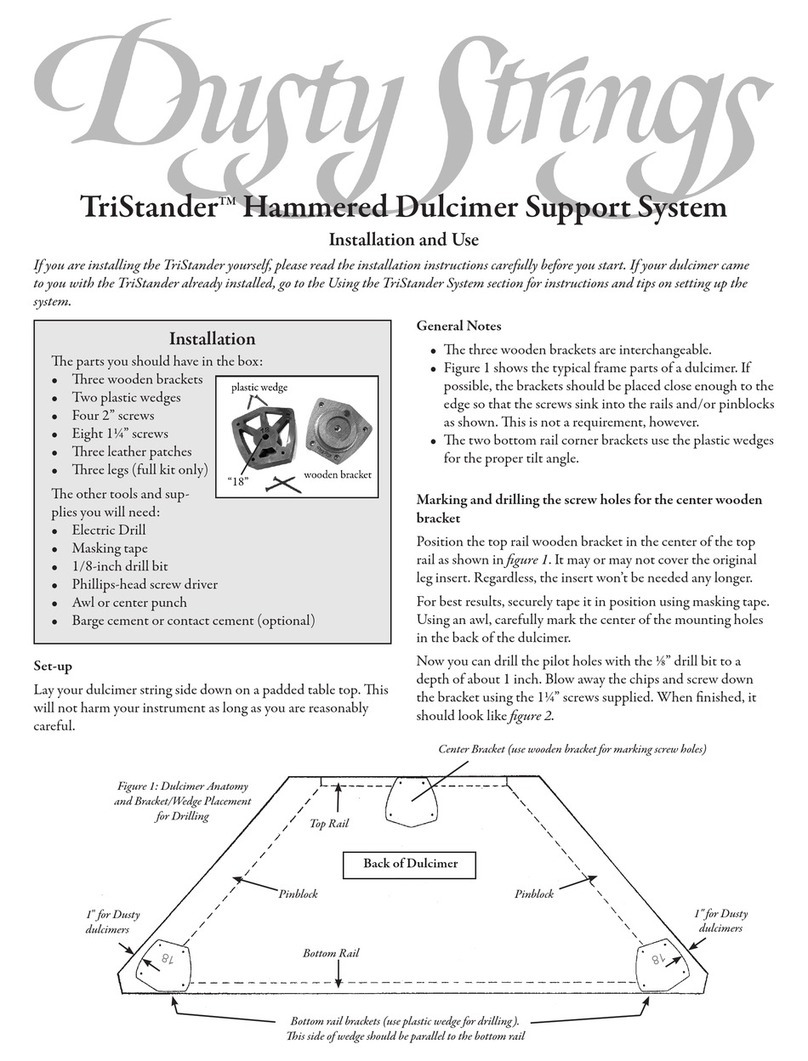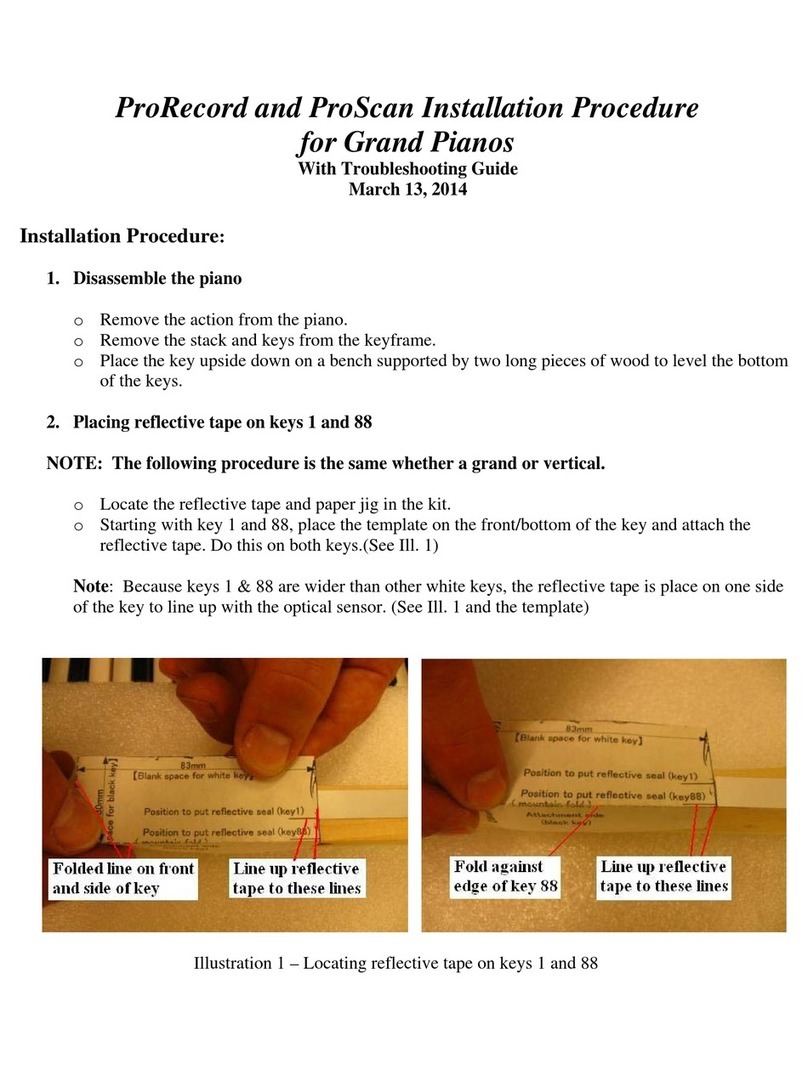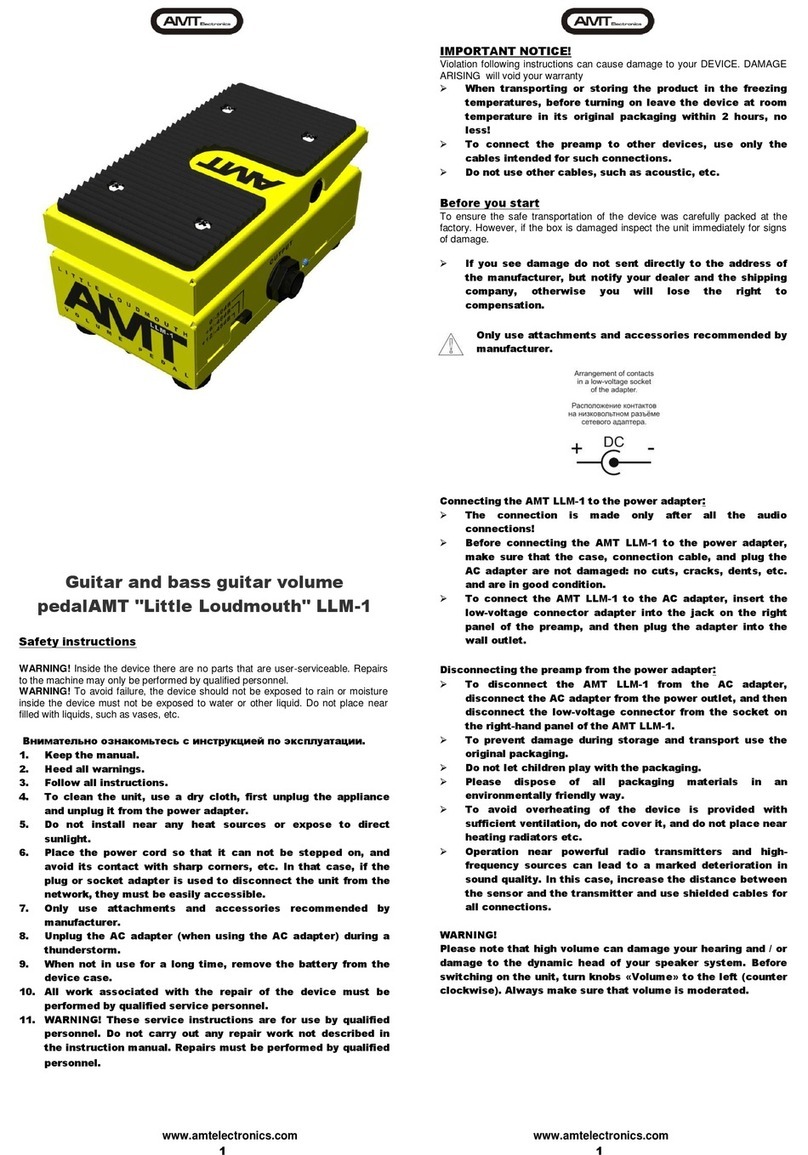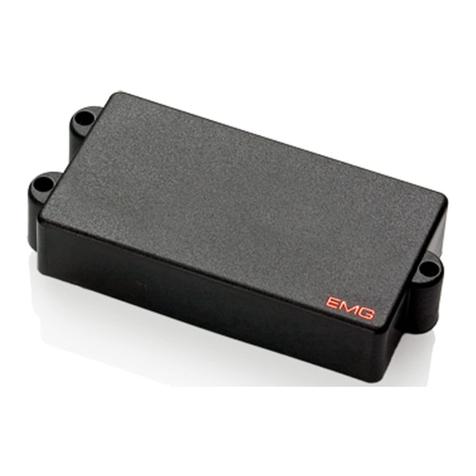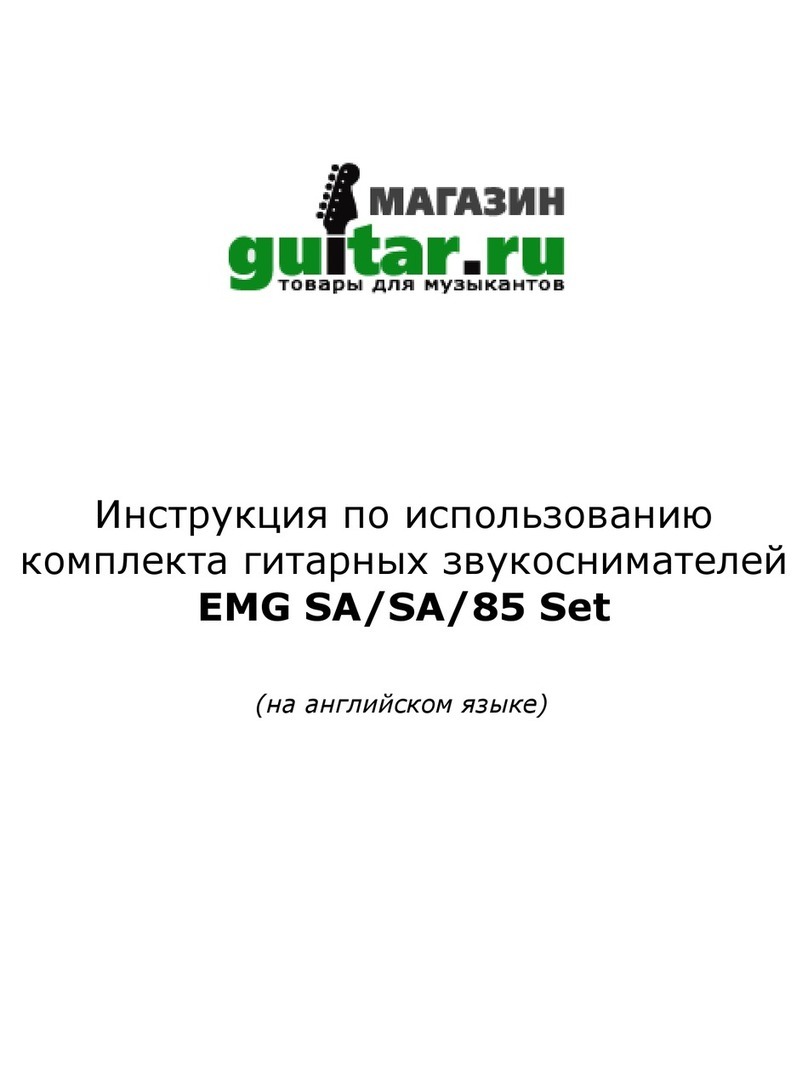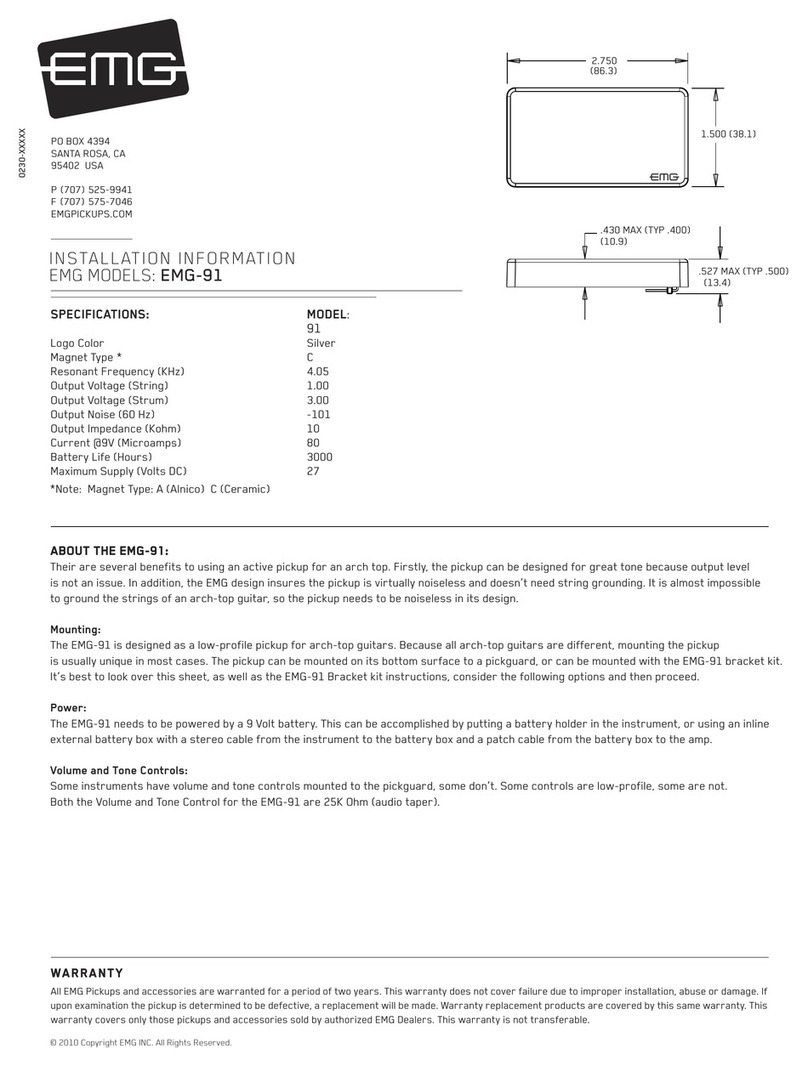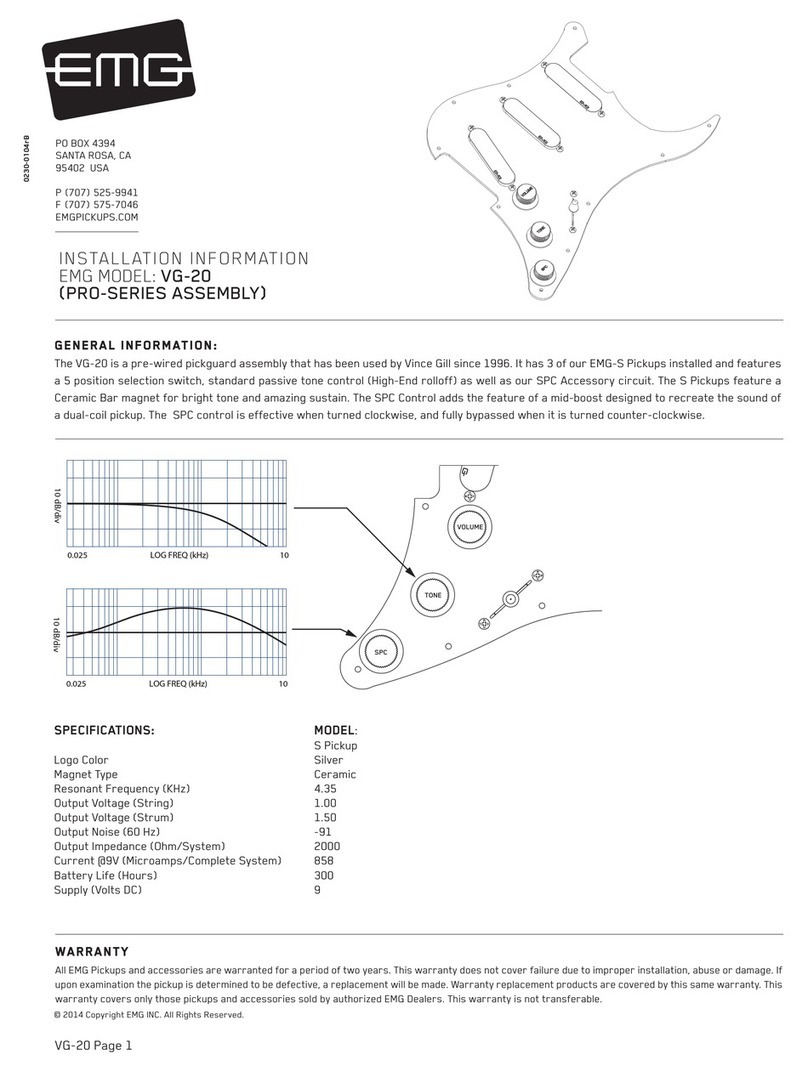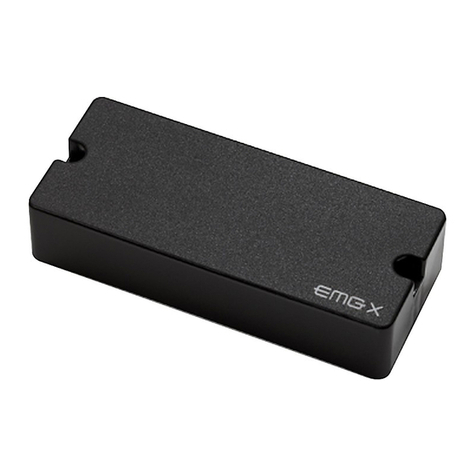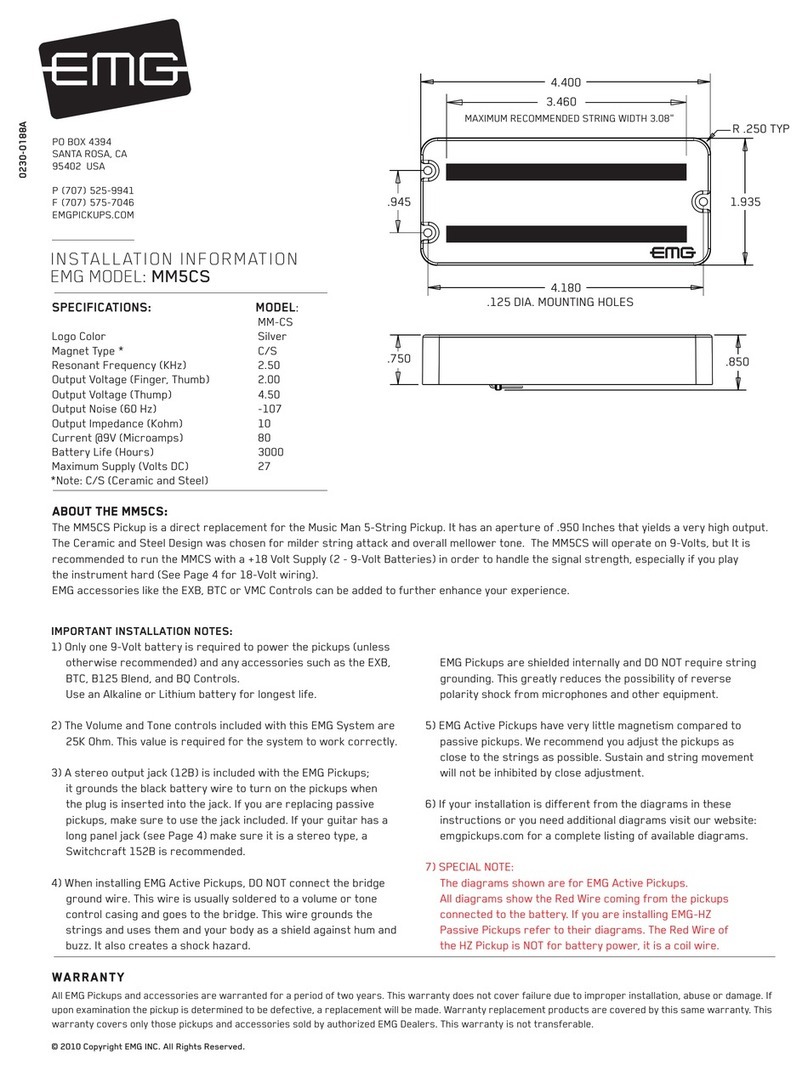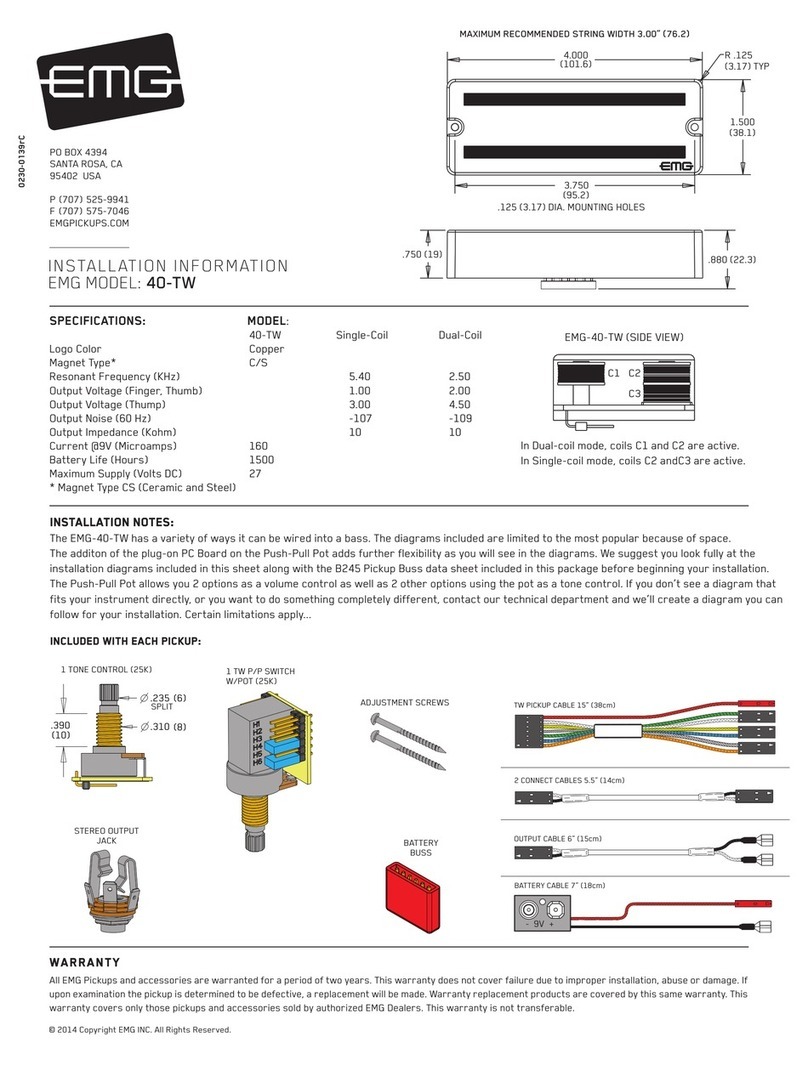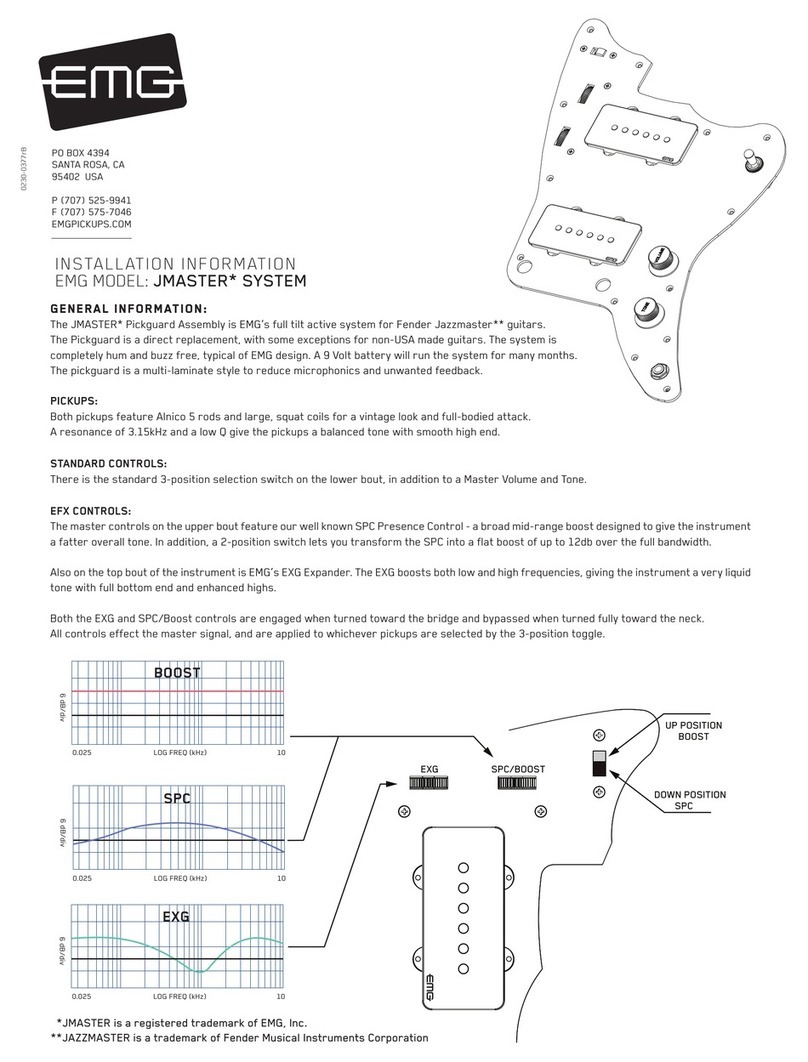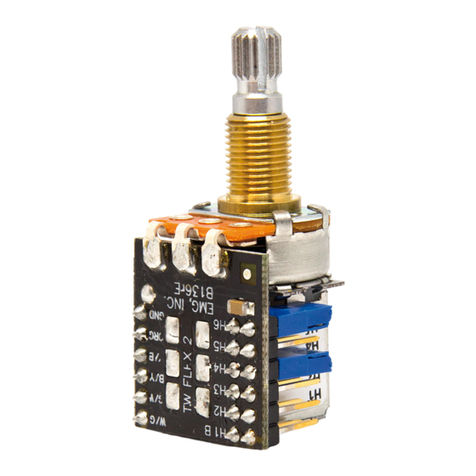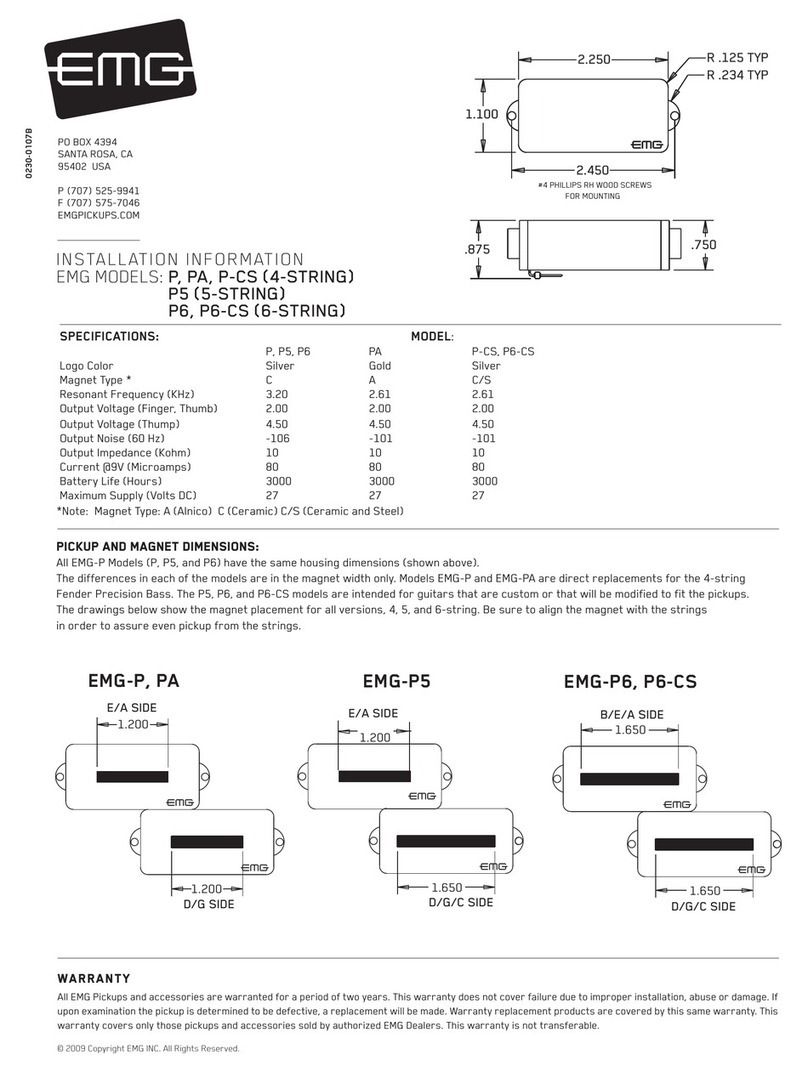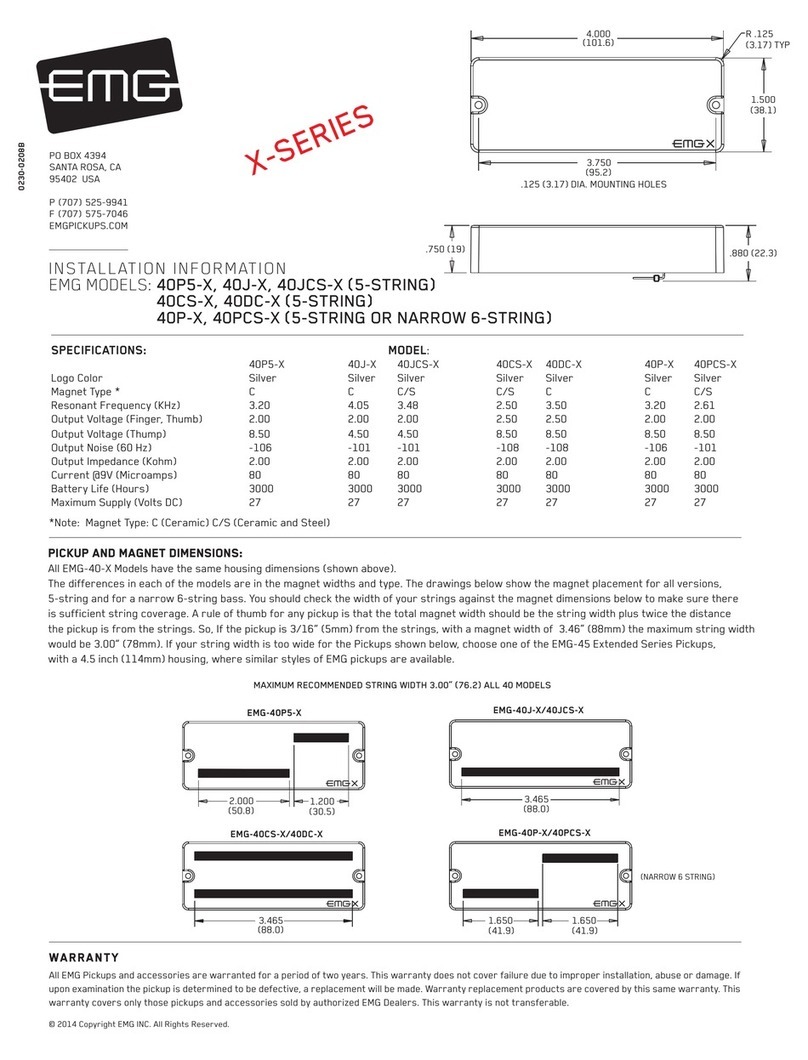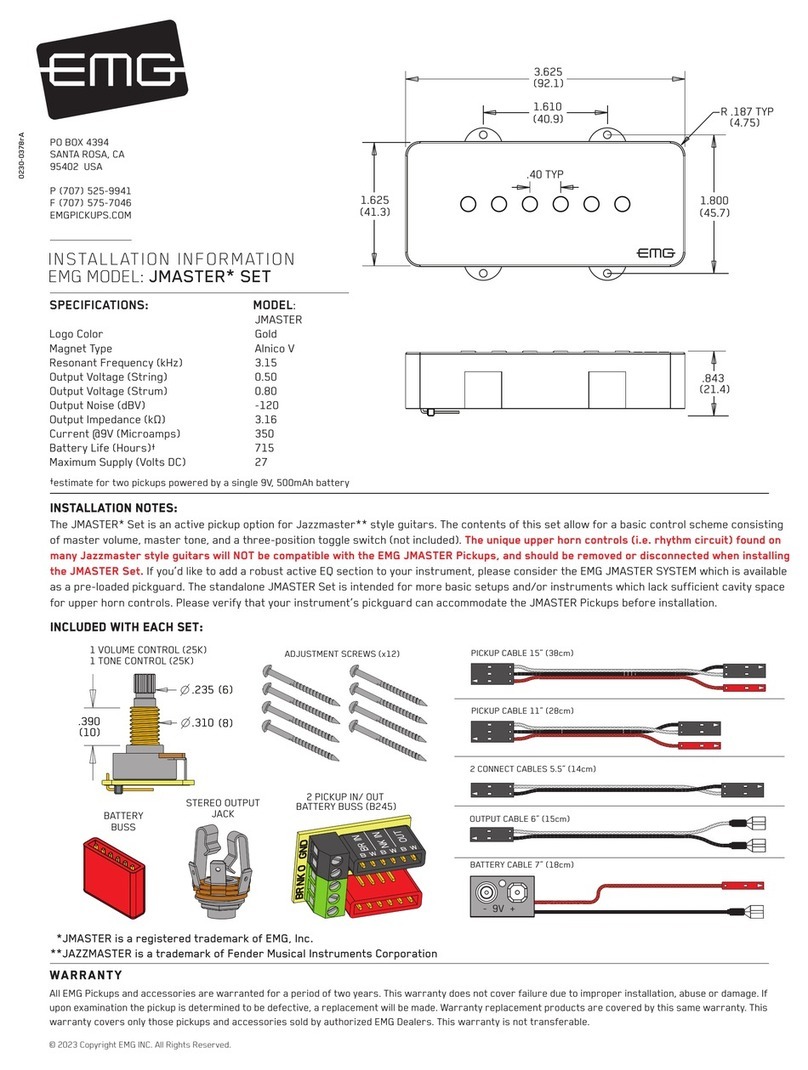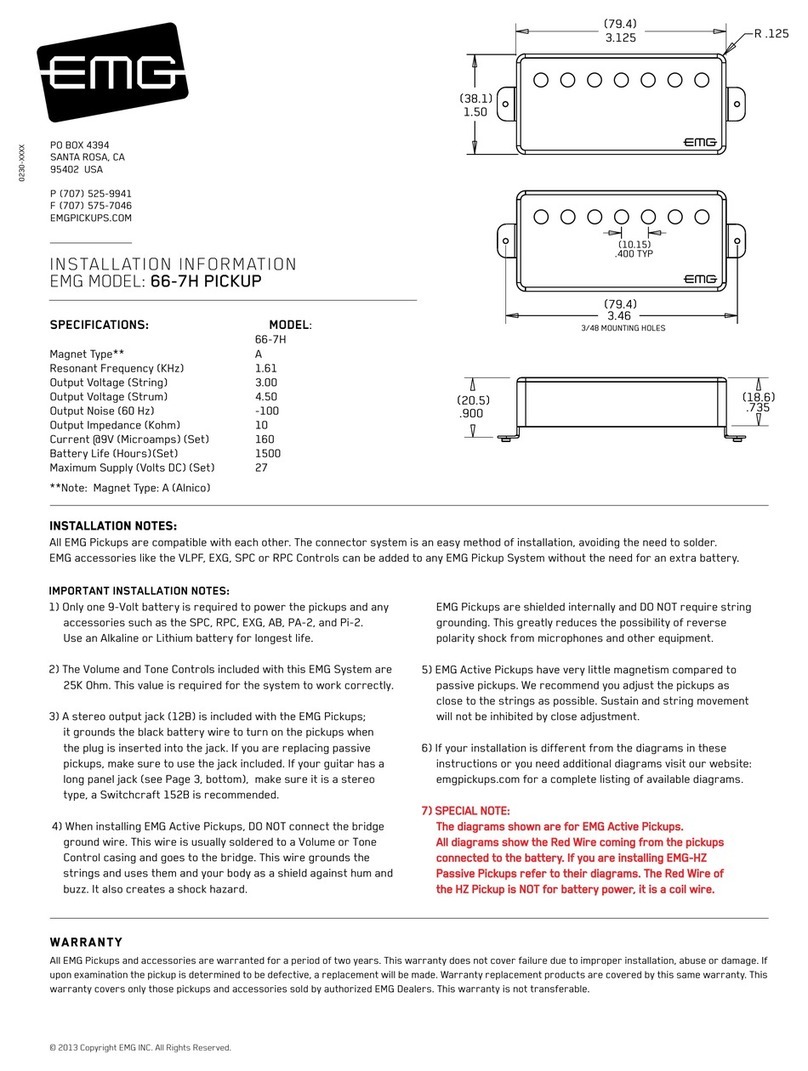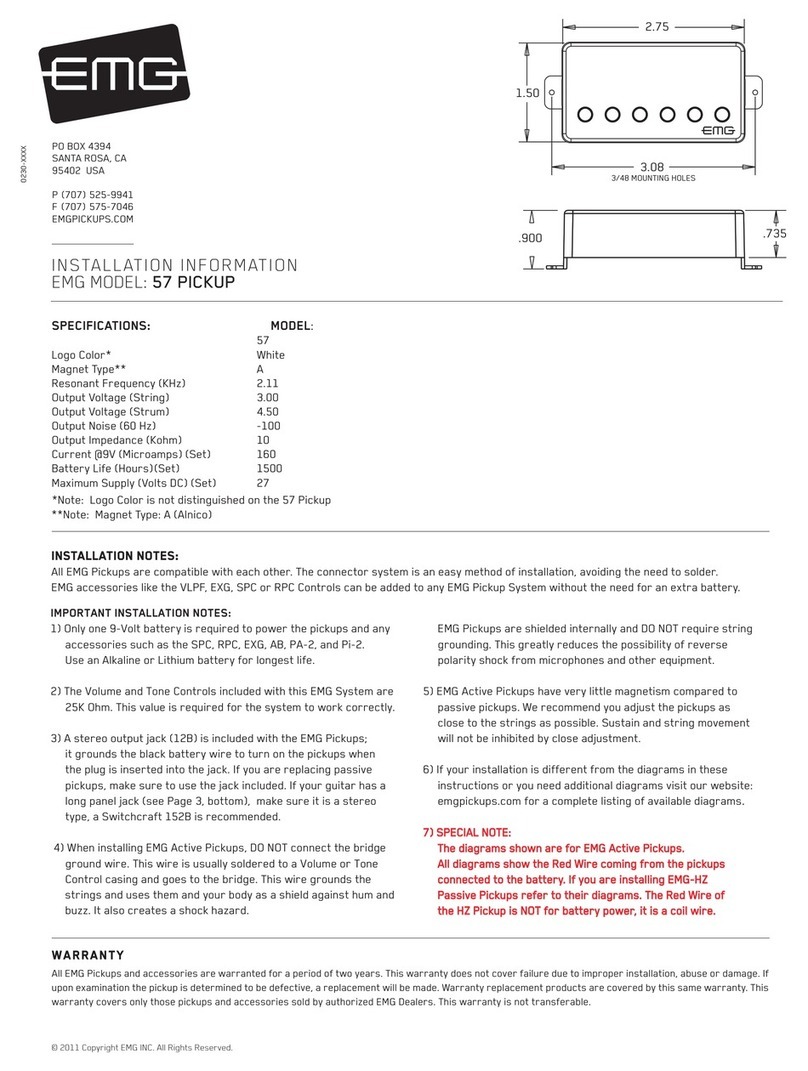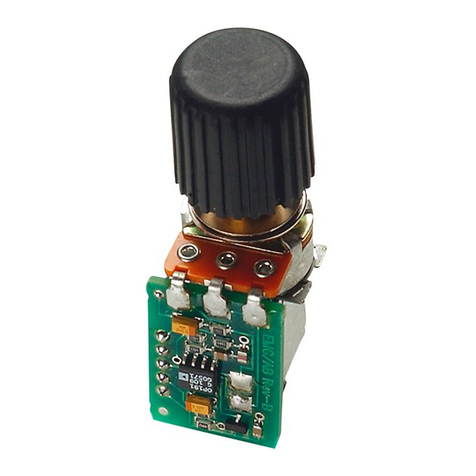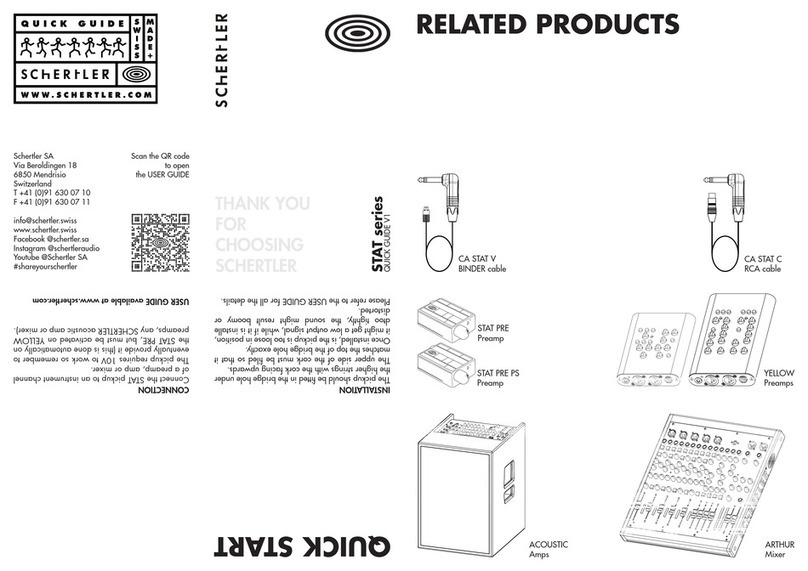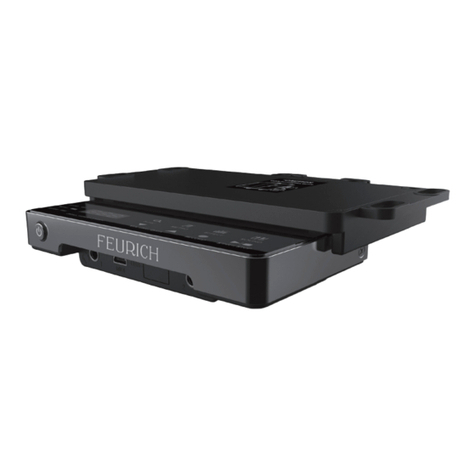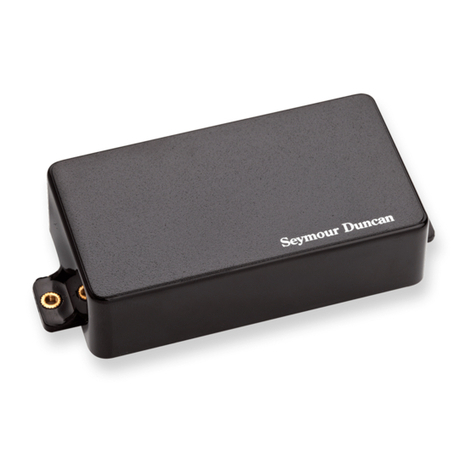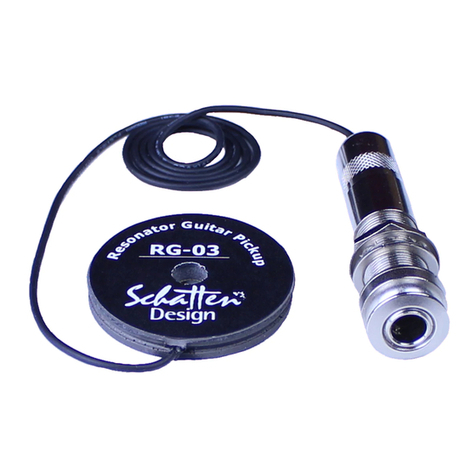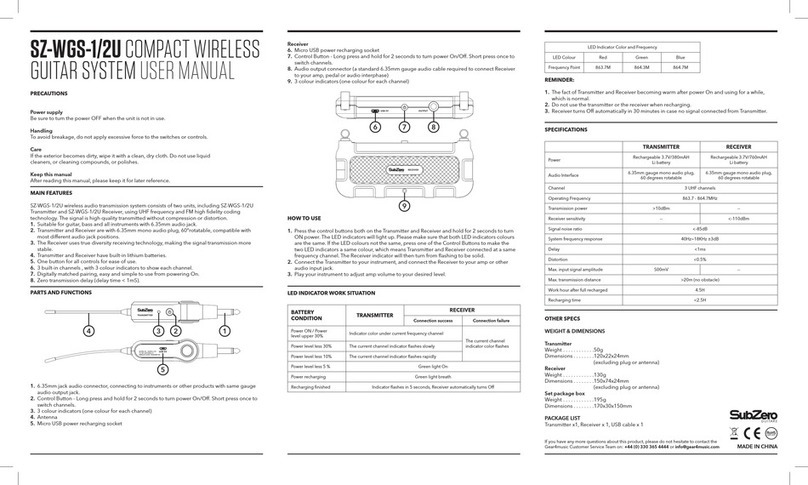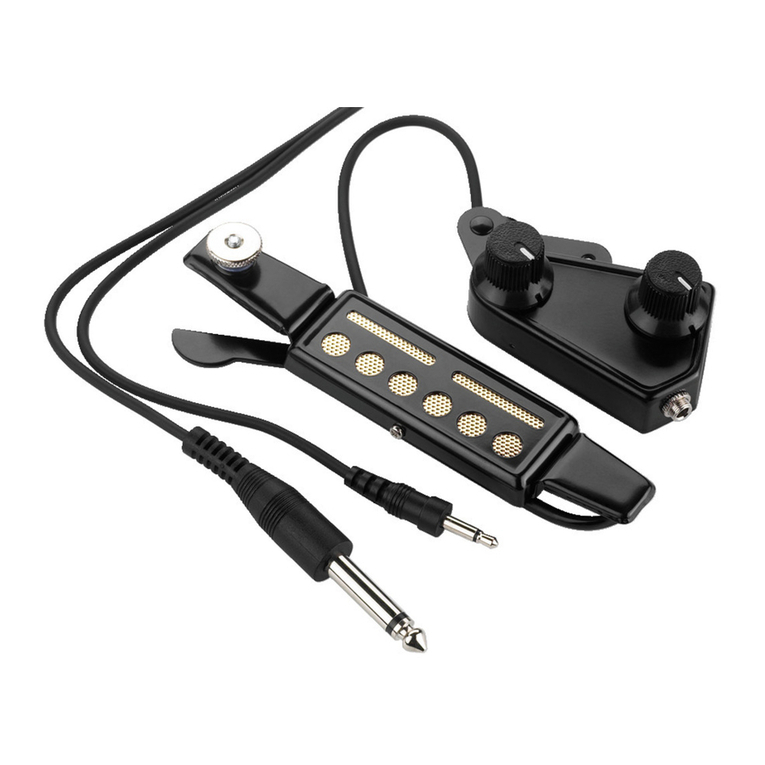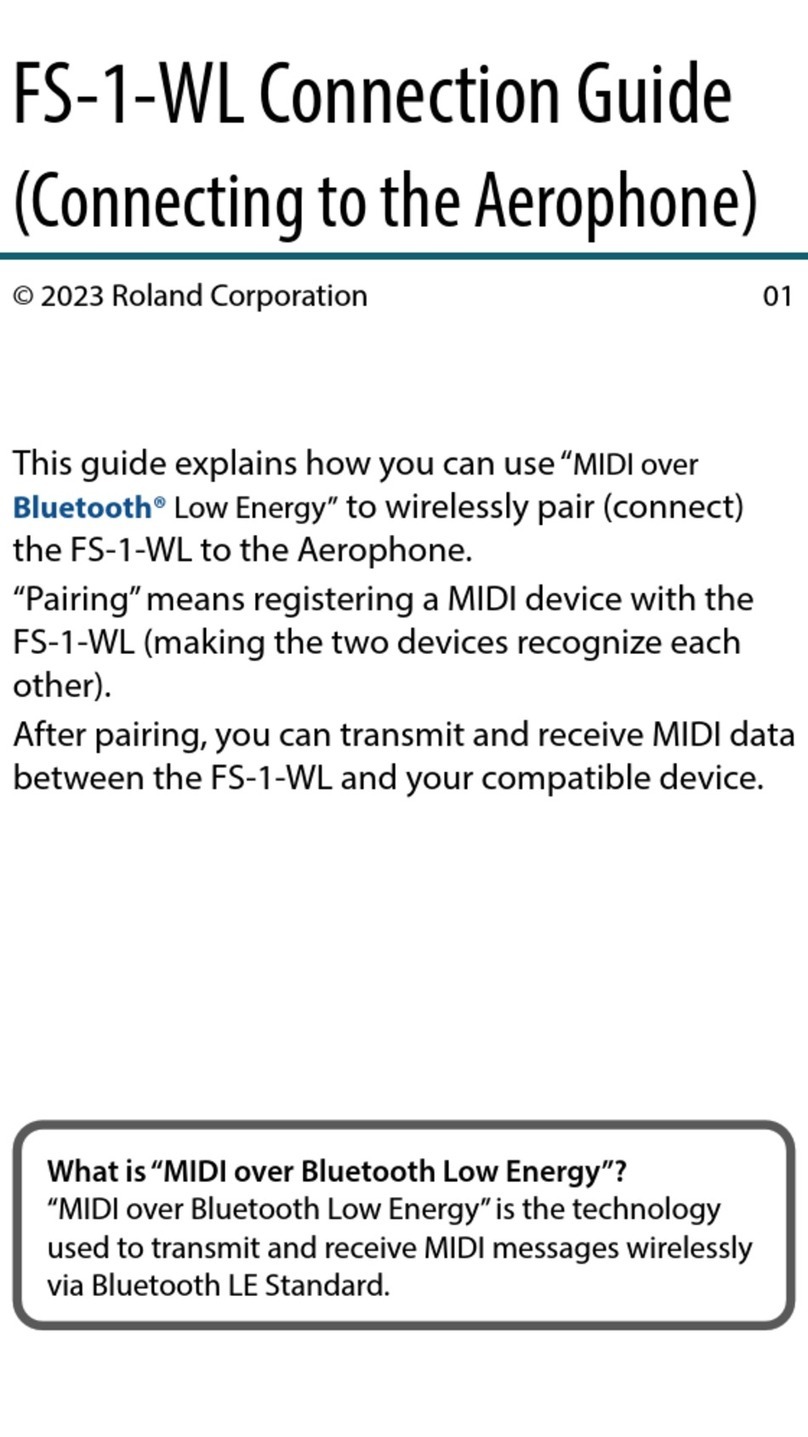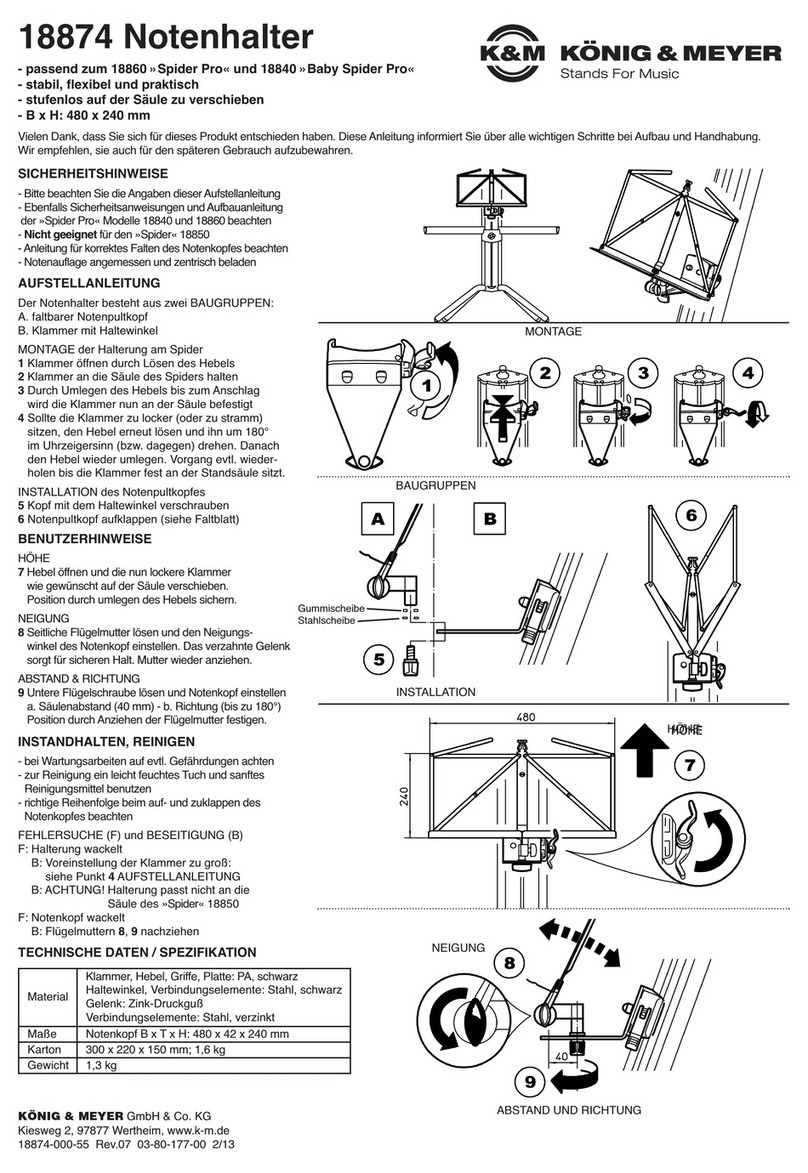
INSTALLATION INFORMATION
EMG MODEL: 40-TW-X
Warranty
All EMG Pickups and accessories are warranted for a period of two years. This warranty does not cover failure due to improper installation, abuse or damage. If
upon examination the pickup is determined to be defective, a replacement will be made. Warranty replacement products are covered by this same warranty. This
warranty covers only those pickups and accessories sold by authorized EMG Dealers. This warranty is not transferable.
© 2009 Copyright EMG INC. All Rights Reserved.
PO BOX 4394
SANTA ROSA, CA
95402 USA
P (707) 525-9941
F (707) 575-7046
EMGPICKUPS.COM
0230-0192A
Installation notes:
EMG-X Series Pickups are compatible with all EMG Active Pickups. They use the connector system for easy installation, avoiding the need to solder.
Older EMG Pickups may need to be soldered, while the newer systems can be easily connected and modified. The X-Series Active Tone Control (VLPF)
is compatible with older EMG Pickups and can be used in place of the passive tone control used with other EMG Active Pickups.
EMG accessories like the EXG, SPC or RPC Controls can be added to any EMG Pickup System without the need for an extra battery. When using a
selection switch, refer to the included B157 Pickup Buss Instructions for a detailed explanation of the Buss.
SPECIFICATIONS: MODEL:
40-TW-X Single-Coil Dual-Coil
Logo Color* Copper
Magnet Type Alnico
Resonant Frequency (KHz) 3.50 2.50
Output Voltage (String) 1.00 4.00
Output Voltage (Strum) 3.00 8.50
Output Noise (60 Hz) -107 -109
Output Impedance (Kohm) 2.00 2.00
Current @9V (Microamps) 160
Battery Life (Hours) 1500
Maximum Supply (Volts DC) 27
IMPORTANT INSTALLATION NOTES:
1) Only one 9-Volt battery is required to power the pickups and any
accessories such as the SPC, RPC, EXG, AB, PA-2, and Pi-2.
Use an Alkaline or Lithium battery for longest life.
2) The Volume Control included with the EMG-X System is 25K Ohm.
This value is required for the system to work correctly.
3) A stereo output jack (12B) is included with the EMG-X Pickups;
it grounds the black battery wire to turn on the pickups when
the plug is inserted into the jack. If you are replacing passive
pickups, make sure to use the jack included. If your guitar has a
long panel jack (see Page 2, bottom), make sure it is a stereo
type, a Switchcraft 152B is recommended.
4) When installing any EMG-X Active Pickup, DO NOT connect the
bridge ground wire. This wire is usually soldered to a volume or
tone control casing and goes to the bridge. This wire grounds the
strings and uses them and your body as a shield against hum and
buzz. It also creates a shock hazard.
EMG Pickups are shielded internally and DO NOT require string
grounding. This greatly reduces the possibility of reverse
polarity shock from microphones and other equipment.
5) EMG-X Active Pickups have very little magnetism compared to
passive pickups. We recommend you adjust the pickups as
close to the strings as possible. Sustain and string movement
will not be inhibited by close adjustment.
6) If your installation is different from the diagrams in these
instructions or you need additional diagrams visit our website:
emgpickups.com for a complete listing of available diagrams.
7) SPECIAL NOTE:
The diagrams shown are for EMG-X Active Pickups.
The diagrams shown are for EMG-X Active Pickups.
All diagrams show the Red Wire coming from the pickups
All diagrams show the Red Wire coming from the pickups
connected to the battery. If you are installing EMG-HZ
connected to the battery. If you are installing EMG-HZ
Passive Pickups refer to their diagrams. The Red Wire of
Passive Pickups refer to their diagrams. The Red Wire of
the HZ Pickup is NOT for battery power, it is a coil wire.
the HZ Pickup is NOT for battery power, it is a coil wire.
3.465
MAXIMUM RECOMMEMDED STRING WIDTH 3.125"
4.000
1.500
.750 .880
R .125
TYP
3.750
.125 DIA. MOUNTING HOLES
X-SERIES
EMG-40-TW-X (SIDE VIEW)
In Dual-coil mode, coils C1 and C2 are active.
In Single-coil mode, coils C2 andC3 are active.
C1 C2
C3

